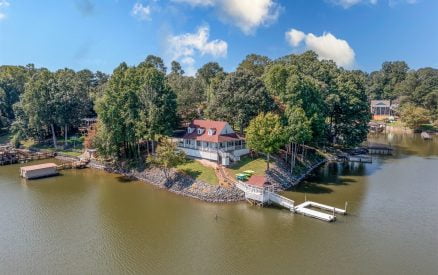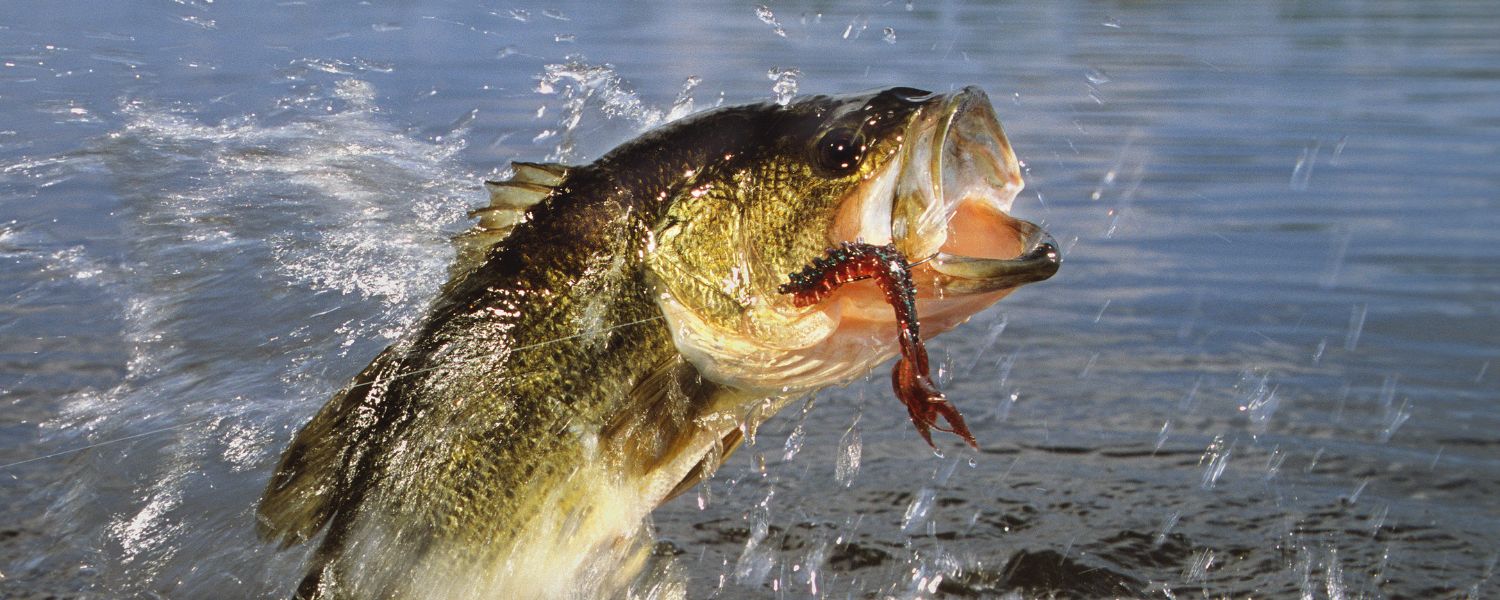Did you know that Lake Norman is North Carolina’s largest man-made lake? This beautiful vacation destination is renowned for its beauty and tranquility. It is also known for its bass fishing. Spread out over 50 square miles, this expansive reservoir offers opportunities for both bank and boat fishing for visitors of all ages.
Whether you’re a seasoned angler or a beginner looking to reel in your first bass, Lake Norman provides the perfect setting. This blog post will explore the benefits of fishing from the bank versus fishing from a boat, the types of bass in the lake, the different bait and tackle needed, and the ideal weather conditions and time of year for bass fishing in the area.
Bank Fishing vs. Boat Fishing
Bank Fishing
Bank fishing on Lake Norman is an accessible and cost-effective way to enjoy the sport. With numerous parks, public access points, and shorelines, you can easily find a spot to cast your line. Bank fishing is perfect for those who prefer a more relaxed approach, as it allows you to set up a comfortable place with chairs and coolers. It’s also a great option for families and those who may not have access to a boat.
When you stay at one of our waterfront vacation rentals, a fun fishing opportunity is never more than a few feet away!
 Boat Fishing
Boat Fishing
Fishing from a boat on Lake Norman offers a different experience, allowing you to explore the vast waters and reach spots inaccessible from the shore. With a boat, you can cover more ground, find deeper waters, and target specific structures that are ideal bass habitats.
You can fish from a kayak, canoe, or motorboat. If you don’t have a boat, numerous lake businesses offer boat rentals.
Species of Bass in Lake Norman
Largemouth Bass: Recognized by their distinctive large mouths that extend past their eyes and their dark horizontal stripe along their sides, largemouth bass thrive in the lake’s abundant cover and structure, such as submerged vegetation, fallen trees, and dock pilings.
Smallmouth Bass: This species is less common in Lake Norman compared to largemouth and spotted bass. Known for their bronze coloring and smaller mouths, which do not extend past their eyes, smallmouth bass are prized for their spirited fights and acrobatic leaps. They prefer clearer water and rocky bottoms with submerged structures or boulders.
Spotted Bass: Also known as “spots.” They closely resemble largemouth bass but are usually smaller and have a distinctive rough patch on their tongue. Spotted bass often display aggressive behavior and can frequently be found in deeper, open waters than largemouth bass.
Stripped Bass: Also known as “stripers,” this species is an exciting catch. They are characterized by their silver bodies with horizontal black stripes running the length of their bodies. Striped bass are known for their powerful runs.
Hybrid Bass: Also known as “hybrids” or “wipers,” this fish species is a cross between striped bass and white bass. They combine the hard-fighting characteristics of both parent species and are known for their strength and endurance. Hybrids have broken horizontal stripes and a more robust body shape.
White Bass: White bass are smaller than striped bass, with silver bodies and several faint horizontal stripes running along their sides. They often inhabit open water areas and are found in schools, especially near baitfish schools.
Click here for an easy bass identification chart.
Bait and Tackle for Lake Norman Bass Fishing
When it comes to bass fishing in Lake Norman, the right bait and tackle can make all the difference. Here are some popular choices:
Bait
Soft Plastics: Worms, lizards, and crawfish are highly effective. Recommended colors are green pumpkin and watermelon.
Crankbaits: Ideal for covering a lot of water quickly. Use shad-colored crankbaits to mimic the local baitfish.
Spinnerbaits: Great for murky waters and attracting bass with their flash and vibration.
Topwater Baits: Frogs and poppers are excellent for early morning and late evening fishing.
Tackle
Rods and Reels: Medium to heavy rods with fast action tips are recommended. Pair them with a quality baitcasting reel for precision casting.
Lines: Use braided lines for heavy cover and fluorocarbon lines for clear water conditions.
Hooks: Wide gap hooks are versatile and effective for most soft plastic baits.
For more information about seasonally appropriate bait and tackle, stop by a local bait shop and ask. You will find that most locals are happy to help. This is also an excellent opportunity to stock up on the necessary supplies.
Ideal Weather Conditions and Time of Year
The best time for bass fishing on Lake Norman is spring and fall. In the spring, bass are in pre-spawn and spawn mode, making them more aggressive and easier to catch. During the fall, bass feed heavily in preparation for winter, providing another peak fishing period. Here are a few ideal weather conditions to take note of:
Overcast Days: Bass are more likely to be active and venture into shallower waters.
Early Morning and Late Evening: Cooler temperatures and lower light levels make bass more active.
Stable Weather: Consistent weather patterns without sudden changes in temperature or pressure are ideal.
Please be sure to check the weather before you head out for a day of fishing. You will want to be prepared for weather conditions.
For more information about fishing on Lake Norman, including fishing licenses and size limits, click here.
 With the correct tackle and targeting the ideal times and conditions, you will indeed have a successful Lake Norman bass fishing expedition. After a day on the water, you will be ready to head back to your vacation rental for some much-needed rest. What are you waiting for? Start your search for the perfect rental! Then, you will be ready to pack your gear, head to the lake, and enjoy the angling adventure of a lifetime.
With the correct tackle and targeting the ideal times and conditions, you will indeed have a successful Lake Norman bass fishing expedition. After a day on the water, you will be ready to head back to your vacation rental for some much-needed rest. What are you waiting for? Start your search for the perfect rental! Then, you will be ready to pack your gear, head to the lake, and enjoy the angling adventure of a lifetime.

